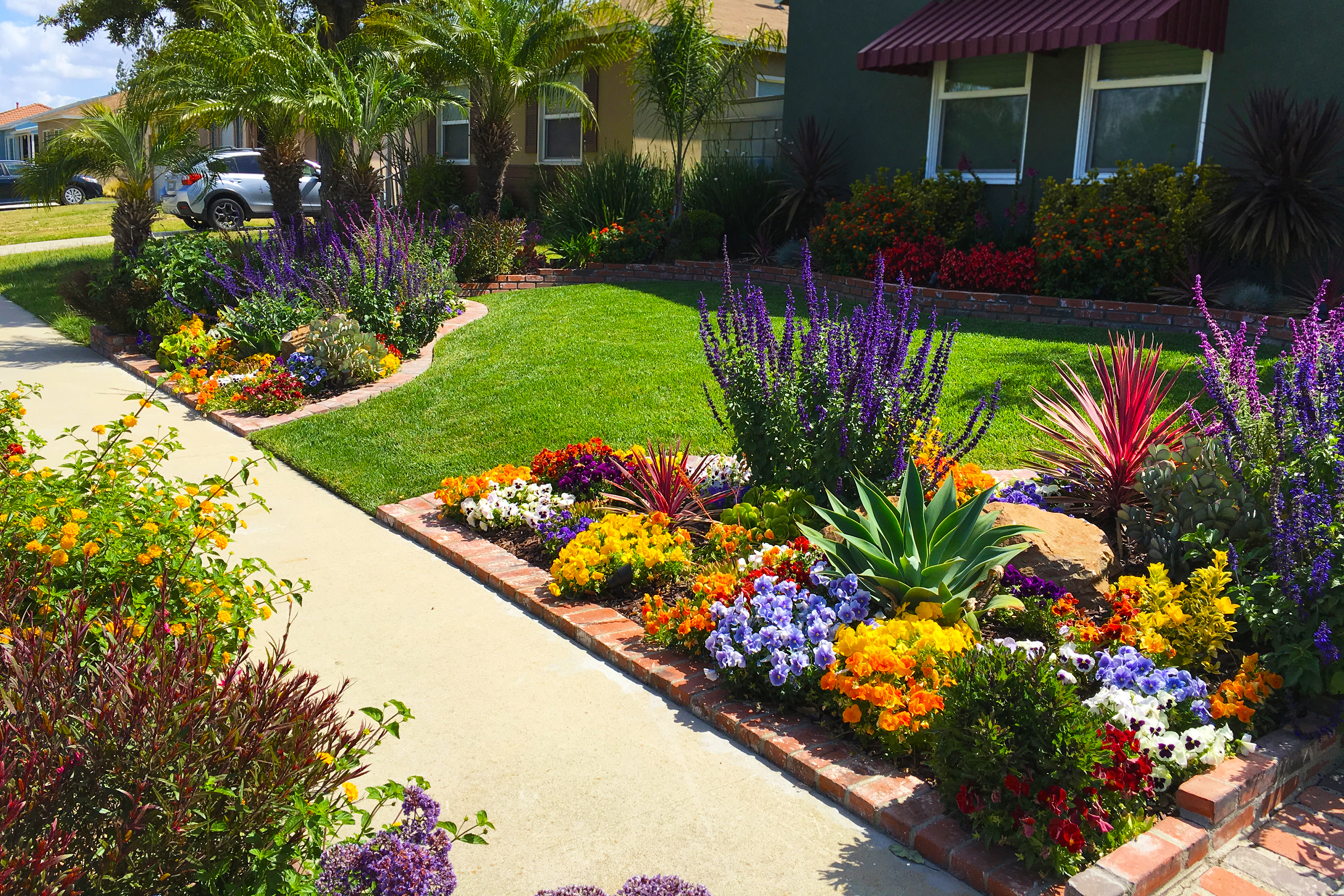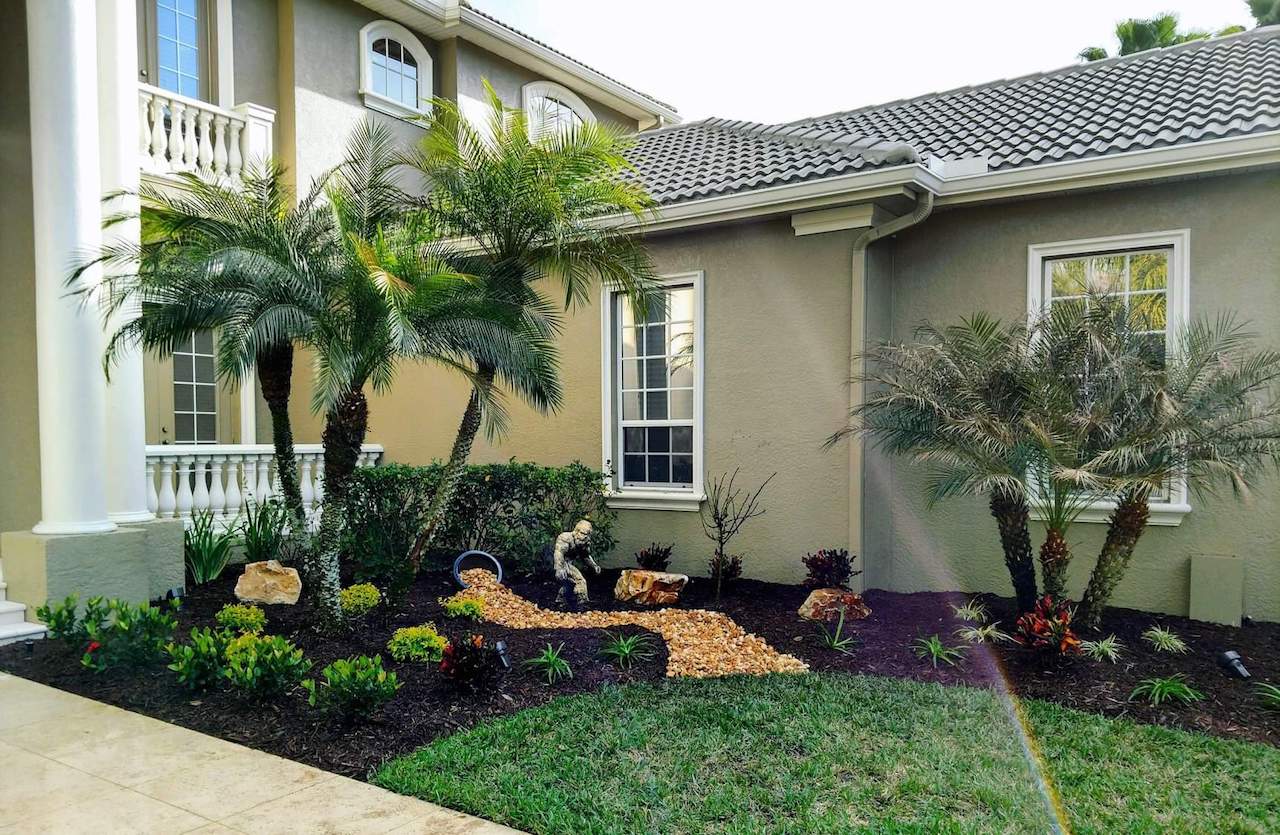Top Tips for Enhancing Your Yard with Palm Desert Landscaping Ideas
Top Tips for Enhancing Your Yard with Palm Desert Landscaping Ideas
Blog Article
A Comprehensive Overview to Creating and Implementing Effective Landscape Design Solutions
The art and scientific research of landscaping prolong beyond mere visual appeals; they involve a thoughtful assimilation of layout principles, environmental stewardship, and practical execution. A detailed guide to effective landscaping services starts with an extensive understanding of your outdoor space, highlighting the value of equilibrium, percentage, and unity. As we explore lasting methods and the option of ideal vegetation, the effects for biodiversity and community well-being become increasingly noticeable. What approaches can one use to guarantee these landscapes not just prosper however additionally flourish in consistency with their surroundings?

Comprehending Landscape Layout Principles
One may wonder what fundamental components add to effective landscape style. At its core, successful landscape layout hinges on several essential principles that assist the setup and option of aspects within a room. These concepts consist of unity, rhythm, equilibrium, and percentage, each serving to develop an unified outdoor environment.
Unity describes the cohesive partnership among different parts, guaranteeing that they interact cosmetically and functionally. Balance can be achieved through asymmetrical or symmetrical plans, allowing the landscape to feel secure and welcoming. Proportion includes recognizing the range of aspects in regard to each various other and the surrounding environment, advertising visual consistency and comfort.

Examining Your Outdoor Area
Before applying the principles of landscape style, a comprehensive evaluation of your outdoor room is essential. This first evaluation assists specify the range of your landscape design project and makes certain that your design lines up with the one-of-a-kind qualities of your residential or commercial property. Begin by examining the dimensions of your space, taking exact measurements to recognize the offered location for various aspects such as yards, pathways, and patios.
Following, observe the existing attributes of your landscape, consisting of topography, soil top quality, and water drainage patterns. These aspects substantially affect plant choice and placement. Furthermore, assess the sunlight exposure across different areas throughout the day, as this will impact the kinds of plants that prosper in your garden.
Think about the microclimates produced by structures, trees, and other obstacles, as they can impact temperature and dampness degrees. Take note of any kind of existing plants or hardscape elements that you desire to keep or get rid of. This thorough examination lays the foundation for a reliable and well-informed landscape design option, guaranteeing that your style is not just visually pleasing yet sustainable and additionally practical for many years to come.
Sustainable Landscaping Techniques
Incorporating lasting landscaping techniques is necessary for developing an ecologically liable exterior room. These techniques not only advertise eco-friendly equilibrium but likewise boost the functional and visual worth of a landscape. One fundamental method is the application of native plants, which call for much less water and maintenance while supporting regional wildlife. Executing effective irrigation systems, such as drip watering, decreases water waste and makes certain that plants obtain sufficient moisture.

An additional reliable method is the critical placement of trees and hedges to supply all-natural windbreaks and color, hence reducing power prices (Palm Desert Landscaping). Rain gardens can be incorporated into the landscape style to manage stormwater drainage efficiently, filtering system continue reading this pollutants prior to they go into waterways
Selecting the Right Plants
Selecting the right plants for your landscape is vital to attaining both aesthetic charm and environmental harmony. The procedure starts with an understanding of your regional environment, dirt conditions, and the certain microenvironments within your landscape. Assessing variables such as sunshine direct exposure, dampness levels, and existing flora will certainly aid you pick plants that thrive in your unique setup.
Consider integrating indigenous plants, as they are well-adapted to neighborhood problems, need much useful link less upkeep, and support regional wild animals. In addition, selecting a varied array of varieties can improve biodiversity while decreasing the danger of condition and bug outbreaks. It is vital to evaluate the growth behaviors, growing durations, and seasonal colors of possible plants to develop a natural and vibrant landscape.
Furthermore, consider the intended use the room; as an example, if the area will certainly experience high foot traffic, select resilient ground covers. By thoughtfully picking plants that align with both your aesthetic goals and ecological needs, you can create a sustainable landscape that not just boosts your property but likewise adds favorably to the surrounding ecosystem.

Execution and Maintenance Strategies
As soon as the best plants have actually been chosen for your landscape, the emphasis moves to effective application and recurring upkeep strategies. Successful installment begins with correct site prep work, which includes dirt testing to identify nutrient levels and pH, followed by modifying the dirt as needed. Very carefully organize plants according to their growth habits and light demands, ensuring appropriate spacing to promote healthy and balanced development.
Irrigation is a vital aspect of execution. Develop a watering routine that considers the specific needs of each plant varieties, readjusting for seasonal changes. Using drip irrigation systems can boost water efficiency and lower runoff.
Upkeep methods should be executed to make sure the durability and vigor of your landscape. Normal jobs include weeding, mulching, and trimming to regulate development and stop disease. Fertilizing should be conducted based on dirt tests, offering the essential nutrients without over-fertilizing.
Monitoring for diseases and parasites is vital; early useful site discovery can stop considerable damage. Last but not least, seasonal adjustments to upkeep routines, such as winterizing perennials and preparing for springtime growth, will certainly make sure that your landscape stays visually enticing and healthy year-round.
Final Thought
Finally, reliable landscaping services call for a comprehensive understanding of style principles, thorough assessment of outside spaces, and the application of lasting techniques. The option of suitable plant types plays a vital function in enhancing aesthetic appeal and eco-friendly durability - Palm Desert Landscaping. Effective implementation and recurring upkeep additionally make sure the long life and vigor of landscapes. By integrating these aspects, landscapes can be transformed into gorgeous, functional environments that advertise biodiversity and add favorably to area wellness.
One might question what fundamental components add to efficient landscape design. At its core, effective landscape layout hinges on numerous essential concepts that guide the plan and selection of aspects within a room.Picking the right plants for your landscape is essential to attaining both aesthetic appeal and eco-friendly harmony. It is crucial to evaluate the growth behaviors, flowering durations, and seasonal colors of possible plants to produce a dynamic and natural landscape.
As soon as the ideal plants have actually been selected for your landscape, the focus shifts to effective application and recurring upkeep strategies.
Report this page